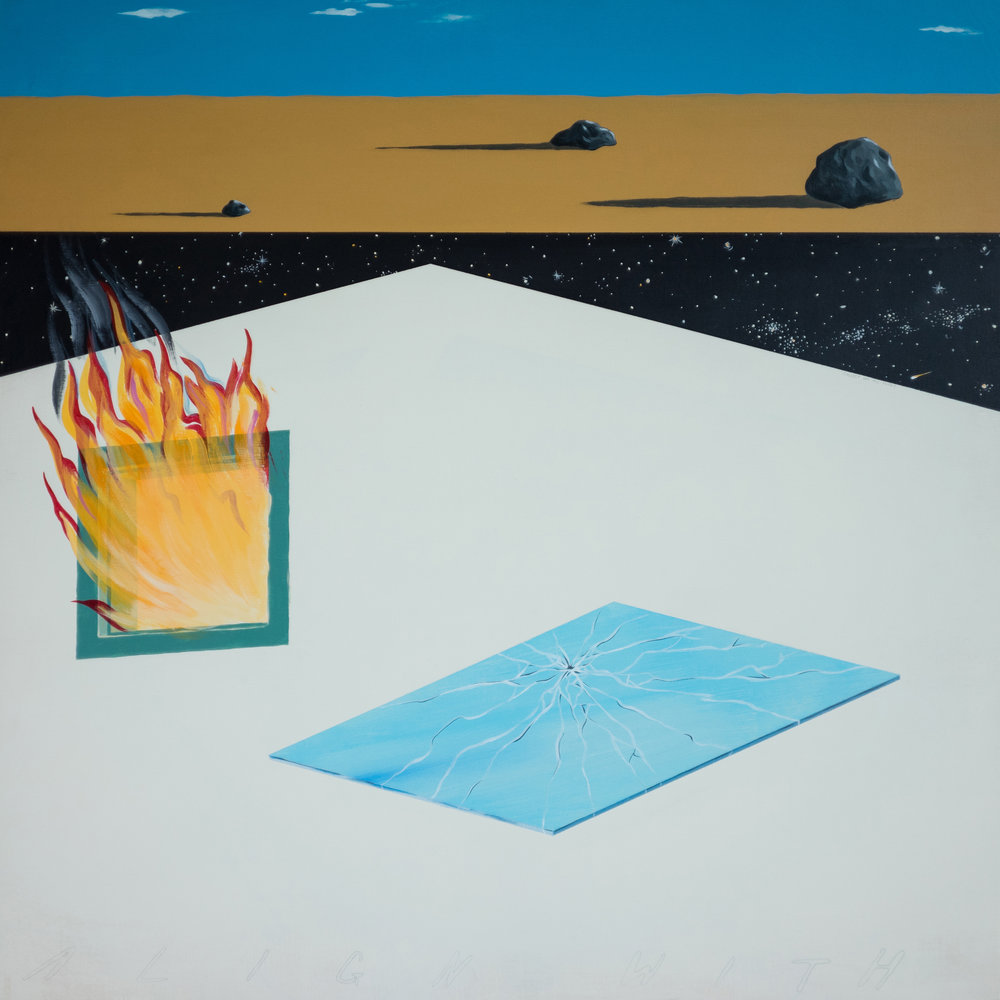
Brainwashed and Holodeck are proud to premiere "Never Enough Time" by Sungod member and Austin resident Michael C. Sharp here, as well as on the latest Brainwashed podcast episode. The song appears on the upcoming limited edition cassette, also titled Never Enough Time, and is one of five beautiful tracks of lush synthesizer expanse and heavily processed guitar work. Sharp may be a percussionist, but his work here is centered on tone and mood, rather than beats. "Never Enough Time" begins from shimmering layers and loops, which he then merges with dream-like synth patterns and delicate effects. Indicative of the album as a whole, it is an entrancing, engaging blending of melody, loops, and experimentation that is as complex as it is gorgeous.
Pre-order Never Enough Time (HD041) by Michael C. Sharp
Never Enough Time will be released on October 20, 2017 as a cassette on the Holodeck label and is limited to 200 copies.



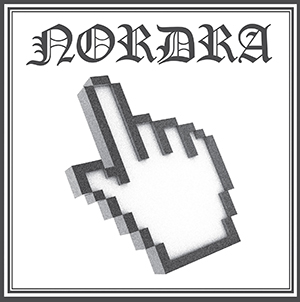 The debut release from Monika Khot (also a member of Zen Mother) as Nordra is one of those sort of records that just gleefully trounces unnecessarily invented borders between genres without a single care or consideration for what an album should sound like. Khot rarely settles into a single style or even structure for these four songs, but there is method to the madness. A full gamut of alternative pop, techno, and drone metal show up, sometimes within the span of a single song.
The debut release from Monika Khot (also a member of Zen Mother) as Nordra is one of those sort of records that just gleefully trounces unnecessarily invented borders between genres without a single care or consideration for what an album should sound like. Khot rarely settles into a single style or even structure for these four songs, but there is method to the madness. A full gamut of alternative pop, techno, and drone metal show up, sometimes within the span of a single song.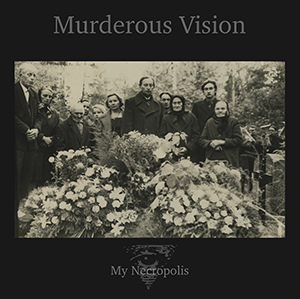 The latest release from Stephen Petrus's long running dark electronic/death industrial project may not deviate far out of the comfort zone of its discography, but that is really a moot point. Instead, it works as the culmination of styles he has dabbled in, but with the self-assured sheen of an experienced artist. I will admit it personally hits some specific nostalgia buttons for me as well, but even objectively it is an excellent piece of malicious, sinister electronics.
The latest release from Stephen Petrus's long running dark electronic/death industrial project may not deviate far out of the comfort zone of its discography, but that is really a moot point. Instead, it works as the culmination of styles he has dabbled in, but with the self-assured sheen of an experienced artist. I will admit it personally hits some specific nostalgia buttons for me as well, but even objectively it is an excellent piece of malicious, sinister electronics.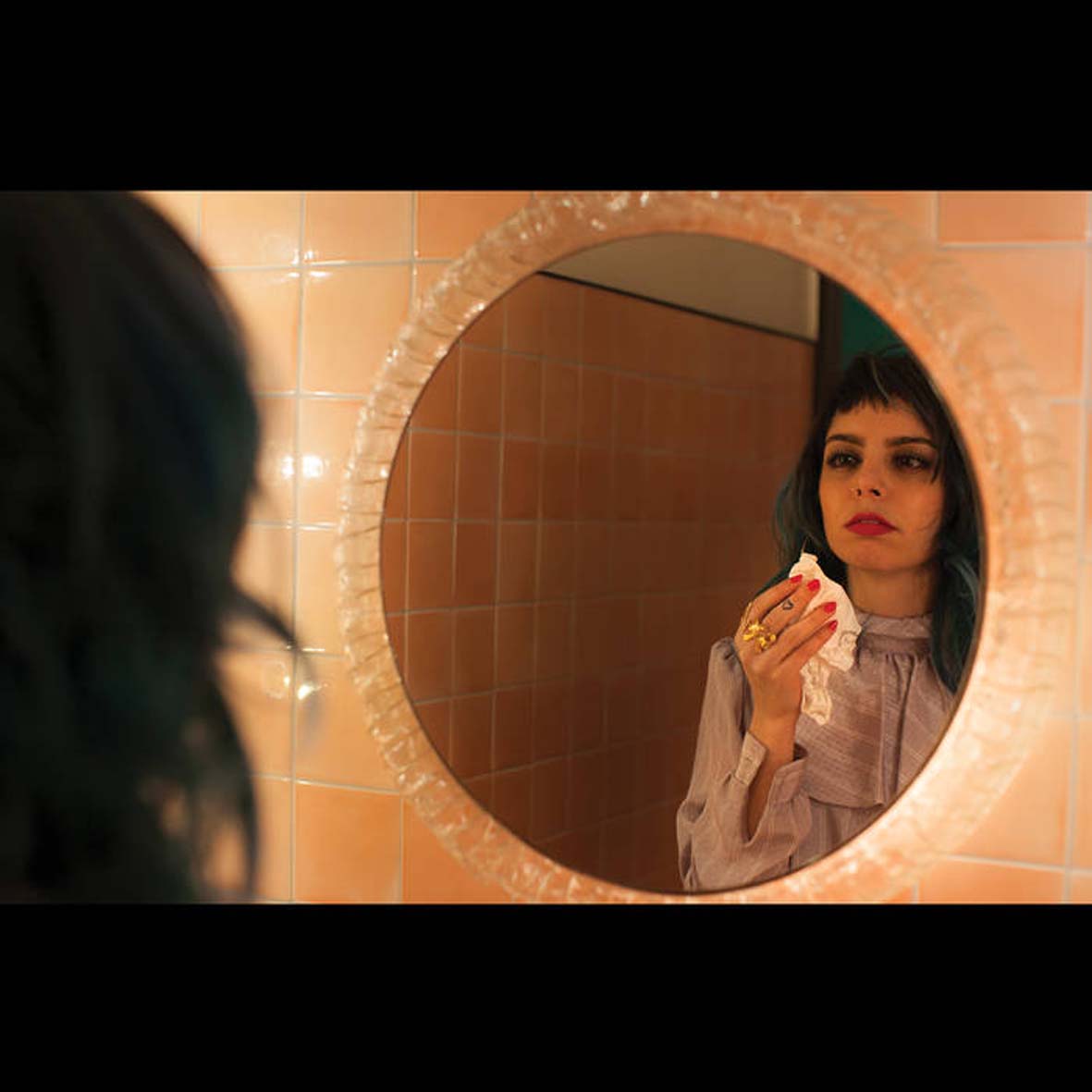 Natalie Chami is best known for being one-third of Chicago's Good Willsmith, but she has also been a prolific solo artist, releasing a slew of cassettes on labels like Hausu Mountain since 2011.  Love Sick is Chami's debut full-length and it is quite a stunner: based on Chami's past, I was merely expecting a suite of atypically skillful analog synth sketches and experiments.  Instead, Love Sick is a gorgeously sultry and blearily hypnagogic feast of visionary outsider soul.  Happily, most of Chami's experimental and improvisatory impulses survived that transformation intact, which is what makes this such a unique album: Chami does not downplay her more lysergic and unpredictable edges so much as find a way to shape them into languorously seductive hooks.  When that happens, some great songs result, yet the more impressive achievement is how Love Sick coheres into such an intermittently dark and absorbing whole, like an erotic dream that subtly morphs into a nightmare.
Natalie Chami is best known for being one-third of Chicago's Good Willsmith, but she has also been a prolific solo artist, releasing a slew of cassettes on labels like Hausu Mountain since 2011.  Love Sick is Chami's debut full-length and it is quite a stunner: based on Chami's past, I was merely expecting a suite of atypically skillful analog synth sketches and experiments.  Instead, Love Sick is a gorgeously sultry and blearily hypnagogic feast of visionary outsider soul.  Happily, most of Chami's experimental and improvisatory impulses survived that transformation intact, which is what makes this such a unique album: Chami does not downplay her more lysergic and unpredictable edges so much as find a way to shape them into languorously seductive hooks.  When that happens, some great songs result, yet the more impressive achievement is how Love Sick coheres into such an intermittently dark and absorbing whole, like an erotic dream that subtly morphs into a nightmare. I embarrassingly came very close to sleeping on this brilliantly unhinged and raucous album, as most critically acclaimed rock music these days tends to underwhelm me.  Omaha's Nance is an entirely different story though, as Negative Boogie does a damn fine job recapturing the hostility and recklessness that made bands like Suicide and The Cramps so much cooler than everyone else.  Of course, Negative Boogie does not sound at all like either of those bands, but Nance's incandescent intensity and viscerally slashing guitars have a way of making even a Merle Haggard cover sound feral and frightening.
I embarrassingly came very close to sleeping on this brilliantly unhinged and raucous album, as most critically acclaimed rock music these days tends to underwhelm me.  Omaha's Nance is an entirely different story though, as Negative Boogie does a damn fine job recapturing the hostility and recklessness that made bands like Suicide and The Cramps so much cooler than everyone else.  Of course, Negative Boogie does not sound at all like either of those bands, but Nance's incandescent intensity and viscerally slashing guitars have a way of making even a Merle Haggard cover sound feral and frightening. With both of his primary projects releasing new material at nearly the same time, it becomes tempting to compare and contrast Richard Chartier’s academic-tinged solo work with the slightly campy (at least in presentation) Pinkcourtesyphone, and at the superficial level there is a lot of similarity. Both Removed and Something You Are Or Something You Do are slow, sparse works that at times drift into near silence, but besides the mood and presentation, the actual compositional approach separates them most. The two are rather distinct works that each capture part of Chartier’s style extremely effectively.
With both of his primary projects releasing new material at nearly the same time, it becomes tempting to compare and contrast Richard Chartier’s academic-tinged solo work with the slightly campy (at least in presentation) Pinkcourtesyphone, and at the superficial level there is a lot of similarity. Both Removed and Something You Are Or Something You Do are slow, sparse works that at times drift into near silence, but besides the mood and presentation, the actual compositional approach separates them most. The two are rather distinct works that each capture part of Chartier’s style extremely effectively. Compared to the multimedia project Sirens from last year, Thanasis Kaproulias’s latest work as Novi_sad is more of a return to his older style as far as composition goes. The single piece that makes up this album may be less concept-heavy, with the only information included being that is is based on environmental recordings in the US, Sweden, Brazil, and the Greek countryside. But even stripped back to just music, Wound_Burner excels in both its diversity and its sense of cohesion. Throughout the 45 minutes he mixes in digital interference, noisy found sounds, traditional electronics, and even voice (courtesy of Irini Kyriakidou in a swirling, yet structurally consistent and gripping album.
Compared to the multimedia project Sirens from last year, Thanasis Kaproulias’s latest work as Novi_sad is more of a return to his older style as far as composition goes. The single piece that makes up this album may be less concept-heavy, with the only information included being that is is based on environmental recordings in the US, Sweden, Brazil, and the Greek countryside. But even stripped back to just music, Wound_Burner excels in both its diversity and its sense of cohesion. Throughout the 45 minutes he mixes in digital interference, noisy found sounds, traditional electronics, and even voice (courtesy of Irini Kyriakidou in a swirling, yet structurally consistent and gripping album.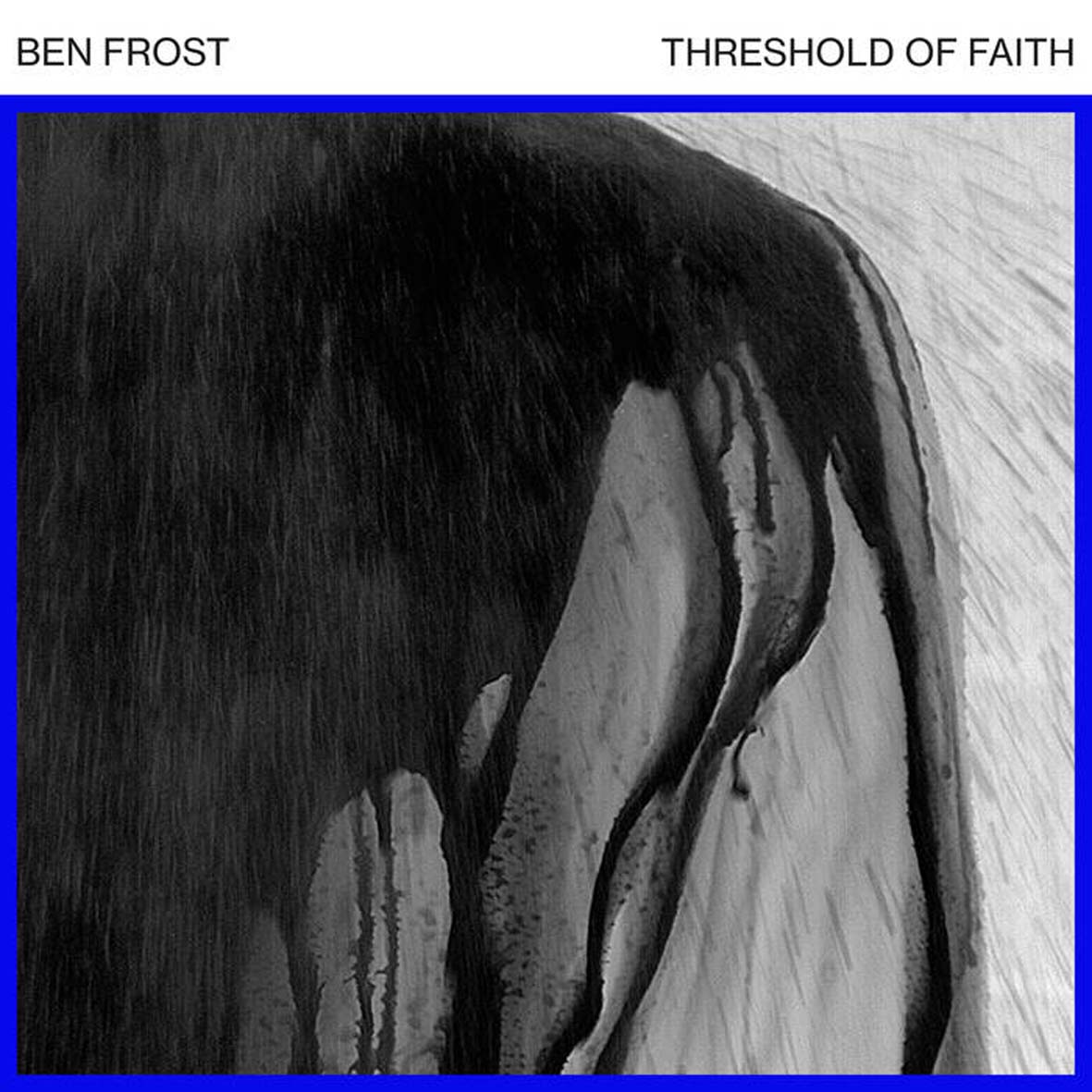 Last summer, Ben Frost flew to Chicago to record with Steve Albini for two weeks, an engineer who certainly shares his appreciation for raw power.  It turned out to be quite a fruitful union, yielding roughly two hours of (presumably) explosive new material that will likely be surfacing for the next several months of the foreseeable future.  This EP is the first salvo from that stockpile of blown-out, impossibly dense speaker-shredders, acting as a bit of a teaser for a full-length due in late September. As expected, Threshold of Faith absolutely erupts from the first notes, capturing Frost at the top of his gnarled, seismic game once again.  In fact, an EP seem to be the perfect format for Frost, as he is at his best when he shows up, unleashes a hellstorm of face-melting elemental force, then gets out before any numbness starts to set in.
Last summer, Ben Frost flew to Chicago to record with Steve Albini for two weeks, an engineer who certainly shares his appreciation for raw power.  It turned out to be quite a fruitful union, yielding roughly two hours of (presumably) explosive new material that will likely be surfacing for the next several months of the foreseeable future.  This EP is the first salvo from that stockpile of blown-out, impossibly dense speaker-shredders, acting as a bit of a teaser for a full-length due in late September. As expected, Threshold of Faith absolutely erupts from the first notes, capturing Frost at the top of his gnarled, seismic game once again.  In fact, an EP seem to be the perfect format for Frost, as he is at his best when he shows up, unleashes a hellstorm of face-melting elemental force, then gets out before any numbness starts to set in. A new Analog Africa compilation is almost always a major event for me, particularly since the general trend is that they seem to get both better and more imaginative with each passing year.  A significant reason for that success is that label head Samy Ben Redjeb has been increasingly drawn away from the heavily anthologized regions of Nigeria, Ghana, Senegal, and Kenya and into less explored territories and more unusual, ephemeral microscenes.  Pop Makossa offers a bit of both, journeying into Cameroon and capturing the brief window in which the prevailing pop style absorbed the funk and disco sounds coming from the US.  If this collection is any indication, Redjeb and co-curator Déni Shain have found quite a rich and largely untapped vein, as these twelves pieces are a feast of fluid basslines, tight songcraft, strong hooks, and seductive grooves.
A new Analog Africa compilation is almost always a major event for me, particularly since the general trend is that they seem to get both better and more imaginative with each passing year.  A significant reason for that success is that label head Samy Ben Redjeb has been increasingly drawn away from the heavily anthologized regions of Nigeria, Ghana, Senegal, and Kenya and into less explored territories and more unusual, ephemeral microscenes.  Pop Makossa offers a bit of both, journeying into Cameroon and capturing the brief window in which the prevailing pop style absorbed the funk and disco sounds coming from the US.  If this collection is any indication, Redjeb and co-curator Déni Shain have found quite a rich and largely untapped vein, as these twelves pieces are a feast of fluid basslines, tight songcraft, strong hooks, and seductive grooves. I am very much enjoying this new chapter of Wolf Eyes' career, as this second release on their Lower Floor imprint is every bit as deliciously wrong-sounding as Undertow, yet breaks some intriguing new ground.  The world is littered with iconic noise artists who flogged their one great idea to death and it is refreshing to see that John Olson, Nate Young, and James Baljo seem quite hellbent on avoiding that fate these days.  Granted, Strange Days II is only a lean 20-minute EP, but it is enough of a compelling detour to justify its existence despite that: it may be brief, but it is a complete and coherent statement.  As with most recent Wolf Eyes fare, it would be quite a stretch to call Strange Days II "noise," yet the trio definitely apply the genre’s tactics to unleash a corroded, thudding, and dystopian caricature of jazz (or at least a pleasingly gnarled twist on Zoviet France-style sci-fi tribalism).
I am very much enjoying this new chapter of Wolf Eyes' career, as this second release on their Lower Floor imprint is every bit as deliciously wrong-sounding as Undertow, yet breaks some intriguing new ground.  The world is littered with iconic noise artists who flogged their one great idea to death and it is refreshing to see that John Olson, Nate Young, and James Baljo seem quite hellbent on avoiding that fate these days.  Granted, Strange Days II is only a lean 20-minute EP, but it is enough of a compelling detour to justify its existence despite that: it may be brief, but it is a complete and coherent statement.  As with most recent Wolf Eyes fare, it would be quite a stretch to call Strange Days II "noise," yet the trio definitely apply the genre’s tactics to unleash a corroded, thudding, and dystopian caricature of jazz (or at least a pleasingly gnarled twist on Zoviet France-style sci-fi tribalism).
